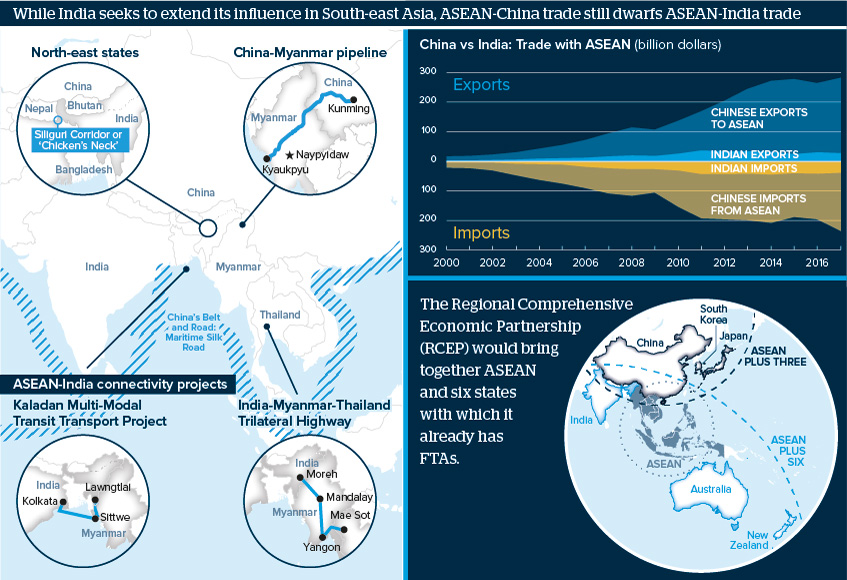India will seek deeper economic ties with ASEAN
For Delhi, closer links with South-east Asia help to develop India’s north-east and counter Beijing’s regional influence
Source: Thomson Reuters Datastream, Oxford Analytica
Outlook
Indian Prime Minister Narendra Modi since 2014 has spoken of transitioning from a ‘Look East’ to an ‘Act East’ policy, pledging greater engagement with South-east Asia.
Delhi’s initiative is about palliating separatist feeling in India’s restive north-east and pushing back on China’s Belt and Road Initiative. Enhanced physical connectivity with Myanmar and Thailand should boost economic prospects in the north-east. It may also help India reduce dependence on the strategically sensitive Siliguri Corridor and respond to Chinese infrastructural investments in South-east Asia.
India and ASEAN will seek to boost bilateral trade, but protectionist demands may keep India out of RCEP.
Impacts
- India will push to extend the India-Myanmar-Thailand Trilateral Highway into Cambodia, Laos and Vietnam.
- Delhi and Naypyidaw will step up talks over an India-Myanmar oil pipeline.
- India’s credit line of 1 billion dollars will help develop further physical and digital connectivity with ASEAN.
- The many exempted items in India-ASEAN trade suggest a lack of economic complementarity.
- India not signing up to RCEP would disappoint ASEAN members more than China.
See also
- India will more strongly assert leadership in region - Jul 8, 2019
- Myanmar’s Rakhine rifts roil Modi’s ‘Act East’ policy - Apr 9, 2019
- Rakhine violence will puncture Myanmar’s peace process - Feb 7, 2019
- India-Japan ties will grow despite bullet train delay - Jul 19, 2018
- Myanmar will attract Asian more than Western investors - May 18, 2018
- Ethnic tensions may rise in India’s north-east - Oct 10, 2017
- More graphic analysis
